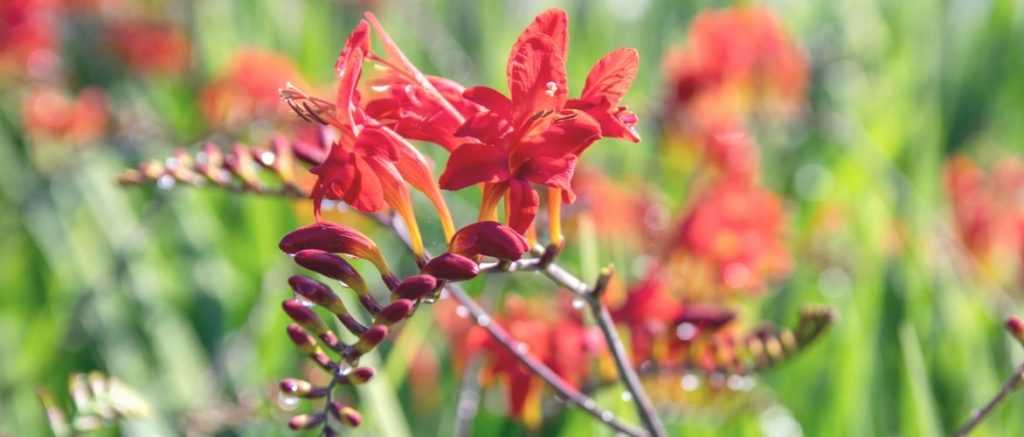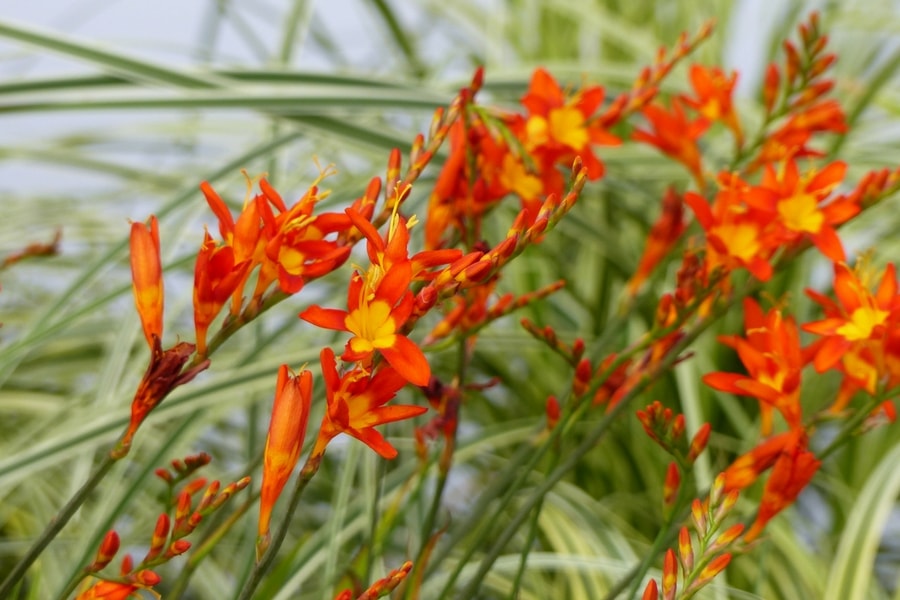
Planting Crocosmias
for a dazzling flower bed
Contents
The crocosmia, also known as Montbretia, is a stunning bulbous plant that quickly adds an exotic touch to your garden. With its flamboyant flowers in vibrant shades of yellow, orange, and red, it brings warmth and vitality to your flower beds, creating a striking display throughout the summer. Beyond its dazzling beauty, crocosmia is a relatively easy plant to grow. Its generous and prolonged flowering, often lasting from July to September, brightens up borders even during the hottest periods. To make the most of this exceptional plant and ensure its flourishing in your garden, follow our practical tips for successful planting and enjoy its wonders season after season!
→ To learn all about this beautiful perennial, read Crocosmia, Montbretia: planting, cultivation, and care.
When to plant crocosmias?
Plant your crocosmias preferably in spring, in April or May, after the last frosts. This allows the bulbs to establish good roots before the summer heat arrives.
If you live in a region with a milder climate, you can also try planting in autumn, between September and November. This gives them time to settle in before winter, for an even more vigorous flowering the following summer.

Where to plant them?
Crocosmias are sun-loving bulbs, plant them in a south-facing, warm and bright location. It’s best to plant them in groups of at least 10 bulbs for a more striking effect.
They require very well-draining soil, stony or sandy… they dislike excess moisture! However, they appreciate ground that remains cool in summer. They prefer neutral or slightly acidic soils. If your soil is heavy or clayey, don’t hesitate to lighten it by adding compost and/or gravel. They also favour soil rich in organic matter, so a bit of compost can be beneficial.
They can also be planted in large pots, by placing gravel or clay pebbles at the bottom for drainage, and choosing a light substrate.
Warning! In areas with harsh winters, it’s advisable to plant them in a spot sheltered from wind and to mulch well as winter approaches to protect the bulbs from frost.
Alexandra’s top tip: Make sure to leave some space between the bulbs (about 10-15 cm), as crocosmias multiply quickly and can spread over the years if they thrive in your garden.
How to plant them?
Crocosmias grow from corms, storage organs that resemble bulbs and are planted in the same way.
- Prepare the soil well at planting time using a small trowel, a dibber or a hand fork.
- If needed, incorporate compost at planting time or gravel and light potting mix.
- Plant the corms 5 to 8 cm deep, spaced about 15 cm apart, placing them the right way up with the pointed end facing upwards. You can plant them slightly deeper if you live in a cold region.
- Add fertiliser at planting time.
- Then cover them with soil, firm down, and water generously.
Continue watering them in the following weeks. While they prefer well-drained soil in winter, crocosmias need water during their growing season. Apply fertiliser every spring.
After flowering: maintenance to consider
- Deadhead spent flowers: Cut back faded flower stems to encourage the plant to channel its energy into the bulbs and prevent it from producing seeds.
- Foliage cleaning: Wait until the foliage turns yellow naturally before cutting it back. This process allows the bulbs to store nutrients for the next season.
- Subscribe!
- Contents

































